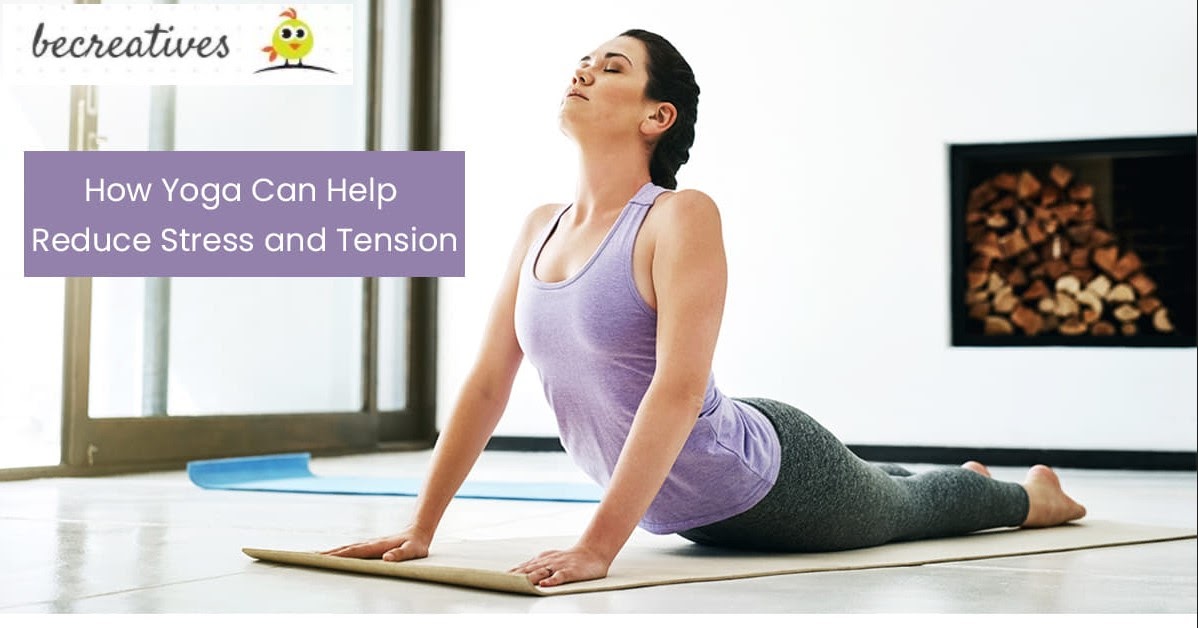
|
| Yoga for Stress Relief |
Stress is a ubiquitous aspect of modern life. Whether it arises from work, relationships or daily challenges, it can take a toll on our well-being. Enter yoga – an age-old practice celebrated for its rejuvenating and calming effects. In this article, we uncover the art of using yoga for stress relief, offering insights and tips for finding that much-needed peace.
1. Understanding Yoga: Beyond Asanas
Yoga is not just about physical postures. It is a holistic practice that connects the mind, body and spirit. Through controlled breathing, meditation and specific asanas, yoga provides freedom from the turmoil of life.
2. The science behind yoga and stress reduction
Yoga stimulates the parasympathetic nervous system, which is responsible for the body's relaxation and digestive activities. It counteracts the fight or flight response caused by stress. Additionally, yoga can reduce levels of cortisol, the primary stress hormone, promoting a feeling of calmness.
3. Beginning with breath: Pranayama technique
Before sinking into the asanas, begin with pranayama-controlled breathing exercises. Techniques like 'Anulom-Vilom' (alternate nose breathing) and 'Bhramari' (beetle breathing) can instantly reduce feelings of anxiety and pave the way for a focused yoga practice.
4. Major yoga asanas for stress relief
Child's Pose (Balasana): A grounding pose that allows for deep relaxation and introspection.
Cat-Cow Stretch: This pairing relieves tension in the spine and promotes mental clarity.
Downward Facing Dog (Adho Mukha Svanasana): Stretches the body while promoting blood flow to the brain, providing both relaxation and rejuvenation.
Corpse Pose (Savasana): An essential closing pose, it allows the body and mind to sink into the benefits of the practice.
5. Meditation and Mindfulness: The Mental Aspect
Include meditation in your yoga routine. By focusing on the present moment and your breathing, you can organize your mind, relieve stress, and embrace peace.
6. Incorporating Yoga into Daily Life for Constant Relief
Morning ritual: Start the day with a short yoga session to create a peaceful atmosphere.
Desk Yoga: Try simple stretches and poses during work breaks to deal with stress.
Evening Wind-Down: Choose calming postures before bed to ensure restful sleep.
Tips for a successful stress-relief yoga practice:
Start slowly: Especially if you're new to yoga, start with short sessions and simple poses.
Maintain consistency: The benefits of yoga increase with consistency.
Create a calming environment: Choose a quiet space, perhaps equipped with dim lighting and soothing music.
Listen to your body: Pushing too hard can lead to injury. Adopt postures that match your body's needs and limitations.
7. Power of Mantras: Sound and Stress Relief
Mantras are sound vibrations that are often chanted in yoga and meditation practices. Rhythmic repetition of specific sounds or phrases, such as "Om" or "Om Shanti", can have a deep calming effect on the mind. They act as anchors, bringing the mind away from scattered thoughts and into a state of focused peace.
8. Yoga Nidra: Yoga of sleep
Yoga nidra, often known as yogic sleep, is a form of guided meditation that provides deep relaxation. It is this state between wakefulness and sleep that allows practitioners to access layers of the subconscious mind, thereby promoting healing and relieving intense stress.
9. Inversion Pose: A Change in Perspective
Inversions, where the head is below the heart, such as Headstand (Sirsasana) or Shoulder Stand (Sarvangasana), can be incredibly refreshing. They boost blood flow to the brain, reduce mental fatigue and provide a literal change in perspective.
10. Include props for better comfort
Poses can be made more accessible and comfortable by using props like yoga blocks, bolsters, and straps. Props are especially beneficial in restorative yoga sessions, where the focus is on deep relaxation and gentle stretching.
11. Role of diet in yoga and stress management
Ayurveda, the ancient Indian medicinal system, is closely linked with yoga. A balanced diet, based on one's Ayurvedic constitution or dosha, can complement the stress-relieving benefits of yoga. Foods rich in prana (life force), such as fresh fruits and vegetables, can increase the energy and clarity you get from a yoga session.
12. Joining a Yoga Community: Shared Healing
While individual practice is beneficial, joining a yoga class or community can increase the benefits. The collective energy in a group session, combined with the guidance of an experienced instructor, can enhance the experience and provide additional layers of stress relief.
Conclusion: Developing a Lifelong Relationship with Yoga
Stress is inevitable, but how we manage it and react to it is within our control. As we delve deeper into the world of yoga, it becomes clear that its techniques – both basic and advanced – offer a wealth of tools for stress relief.
To truly harness the healing power of yoga, it is essential to view it as a journey rather than a destination. As our understanding and practice deepen, so does the experience of peace and balance, providing a glimmer of peace in an often chaotic world.
FAQs on Yoga for Stress Relief
1. How does yoga provide relief from stress?
Yoga combines physical postures, breathing exercises and meditation to promote a calm mind and relaxed body, thereby reducing stress.
2. Which yoga asanas are best for stress relief?
Child's pose, downward dog pose, cat-cow stretch, legs up the wall and corpse pose are among the many effective poses for stress relief.
3. How often should I practice yoga for stress management?
Even short, daily sessions can be beneficial. Consistency is important, but frequency may vary depending on individual needs.
4. Do I need any special equipment?
Yoga mat is recommended for comfort. Props such as blocks or straps can be helpful but are not necessary.
5. Can beginners do yoga for stress relief?
Absolutely! Start with basic postures and gradually learn more postures as you become comfortable.
6. How does breathing play a role in yoga for stress relief?
Controlled breathing, or pranayama, helps activate the body's relaxation response, reduce stress, and promote calmness.
7. Can I practice yoga at home?
Yes, with guidance from online tutorials, apps or books. However, it may be beneficial to attend classes initially to ensure correct posture and technique.
Keywords: mantra, yoga nidra, inversion, props, ayurveda, yoga community, stress management, deep relaxation, guided meditation, ayurvedic diet.
Disclaimer: While yoga offers innumerable benefits, advanced techniques must be approached with caution. Consulting experienced yoga practitioners or teachers can ensure safe and effective practice.






0 टिप्पणियाँ
please do not inter any spam link in comment box.